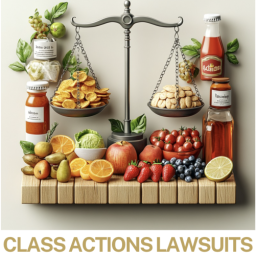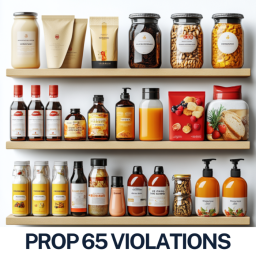
In October 2025, the UK Court of Appeal handed down a new ruling in the long-running Adidas v Thom Browne “stripe war,” marking another defeat for the sportswear giant.
The case not only cements Thom Browne’s earlier victory but also reshapes how brand owners must approach trademark clarity, position marks, and design protection in the UK and beyond.
Adidas vs Thom Browne: The Latest Update (October 2025)
On 23 October 2025, the UK Court of Appeal dismissed Adidas’s appeal over six of its “three-stripe” trademarks. The court upheld the earlier High Court judgment from November 2024, confirming that the marks were invalid for lack of clarity and precision.
The ruling reaffirms that:
- Descriptions like “three parallel equally spaced stripes applied to a garment, running along one third or more of the length of the sleeve” are too imprecise to define a single, protectable sign.
- Trademark protection for simple, geometric elements—such as stripes—cannot extend indefinitely or without clear boundaries.
- While these six marks were struck down, Adidas retains other valid three-stripe registrations, meaning its core branding still stands.
Why Adidas Lost: The Legal and Practical Reasons
1. The Problem with “Position Marks”
At the heart of Adidas’s loss was how it defined its marks. A position mark is one where protection depends on where and how the mark appears on a product.
Adidas’s applications described its stripes using relative terms like “one third or more of the length,” or “substantially the whole length.” The Court of Appeal agreed with the High Court that these phrases are too vague, they do not pinpoint what exactly the mark is.
Under UK and EU law, a trademark must be:
- Clear and precise: The boundaries of the mark must be objectively determinable.
- Self-contained and intelligible: Anyone reading the register should know what’s protected.
Because Adidas’s wording allowed for multiple interpretations, it failed this “Sieckmann” test (from the landmark Sieckmann v German Patent Office case).
2. Consumer Perception and Market Context
Courts consistently held that consumers can easily distinguish between Thom Browne’s four-bar design and Adidas’s three stripes.
Market context was also key:
- Adidas targets the sportswear and athleisure market.
- Thom Browne serves the luxury tailoring segment.
As Justice Smith noted, the “reasonably observant consumer” would not confuse the two, particularly at Thom Browne’s luxury price point.
(Global Legal Post, Nov 2024)
3. A Lesson in Over-Enforcement
Adidas’s aggressive trademark enforcement, while long-standing, backfired.
Courts found that the company’s broad filings and history of pursuing multiple stripe-based designs created ambiguity about what exactly it sought to protect.
When enforcement outpaces clarity, it invites judicial pushback.
This mirrors a global pattern: courts in the U.S., Germany, and now the UK Court of Appeal have all pushed back against overbroad “monopoly” claims on simple design features.
The Broader Impact on Brand Protection Strategy
Stricter Standards for Non-Traditional Marks
The Court of Appeal decision reinforces that non-traditional trademarks (like colors, stripes, or product shapes) will be scrutinized for precision and distinctiveness.
Brands must define not just what the mark looks like, but where and how it appears.
Drafting Precision Now Determines Protection
The era of vague wording is over. Legal teams must collaborate closely with designers to ensure:
- Every registration is visually consistent with how the mark appears in commerce.
- Descriptions avoid flexible terms like “generally,” “substantially,” or “usually.”
- Distinctiveness is demonstrated with evidence (advertising spend, surveys, sales).
Market Differentiation as a Defense
Thom Browne’s win shows that market positioning, luxury vs mass retail, can be a powerful defense. Even visually similar designs may coexist if consumers shop in different contexts with different expectations.
How Brands Can Avoid Similar Trademark Battles
1. File With Precision
Use clear visual representations and narrow, accurate wording. Describe position marks by exact placement, orientation, and proportion.
2. Maintain Genuine Use Evidence
Keep marketing materials, invoices, and product photos proving use of the mark as registered. Non-use can lead to revocation.
3. Audit and Narrow Your Portfolio
Regularly review your registrations. Remove or refine outdated marks to reduce vulnerability to invalidation.
4. Negotiate Co-Existence Early
If another brand uses similar visual cues, consider negotiation over litigation. Co-existence agreements can save millions in legal fees and reputation damage.
5. Understand the Market Context
Before enforcing, assess whether your consumers, and theirs, would really be confused. If not, litigation may only expose your mark’s weaknesses.
Why This Case Matters for the Fashion and IP Industry
The ruling sends a clear message: iconic design doesn’t mean unlimited protection.
For global fashion houses and emerging designers alike:
- The threshold for protecting minimalist designs (like stripes, lines, or color blocks) is getting higher.
- Overly broad registrations are more likely to fall under judicial scrutiny.
- Litigation can expose weaknesses in legacy trademark portfolios.
For IP professionals, this is a landmark precedent clarifying the precision principle in trademark registration and enforcement.
Frequently asked questions (faq)
1. Did Adidas lose all its trademark rights?
No. Only six of Adidas’s UK trademarks were invalidated for lack of clarity. The company still holds other valid registrations for its three-stripe mark, which remain enforceable.
2. Is this the end of the Adidas vs Thom Browne dispute?
Mostly. With the Court of Appeal’s October 2025 ruling, the UK proceedings are effectively concluded unless Adidas seeks permission to appeal to the Supreme Court (which, as of now, has not been filed).
3. What can other brands learn from this case?
Ensure that your trademarks, especially position or pattern marks, are precisely defined, consistently used, and backed by clear consumer recognition evidence.
4. Can simple patterns like stripes or colors still be trademarked?
Yes, but only if they are distinctive, precisely described, and have acquired secondary meaning. Generic or flexible designs will not qualify for strong protection.
5. How can businesses prevent similar disputes?
Conduct clearance searches, seek legal guidance on wording, and avoid overreaching claims. Early IP strategy is cheaper and safer than late-stage litigation.
Key Takeaway
The Adidas-Thom Browne saga is more than a clash of fashion houses, it’s a wake-up call for all brand owners.
Clear, precise trademark drafting and strategic enforcement are no longer optional, they’re essential.
As courts tighten standards for non-traditional marks, the brands that invest in clarity, distinctiveness, and consumer perception will be the ones who truly earn their stripes.














